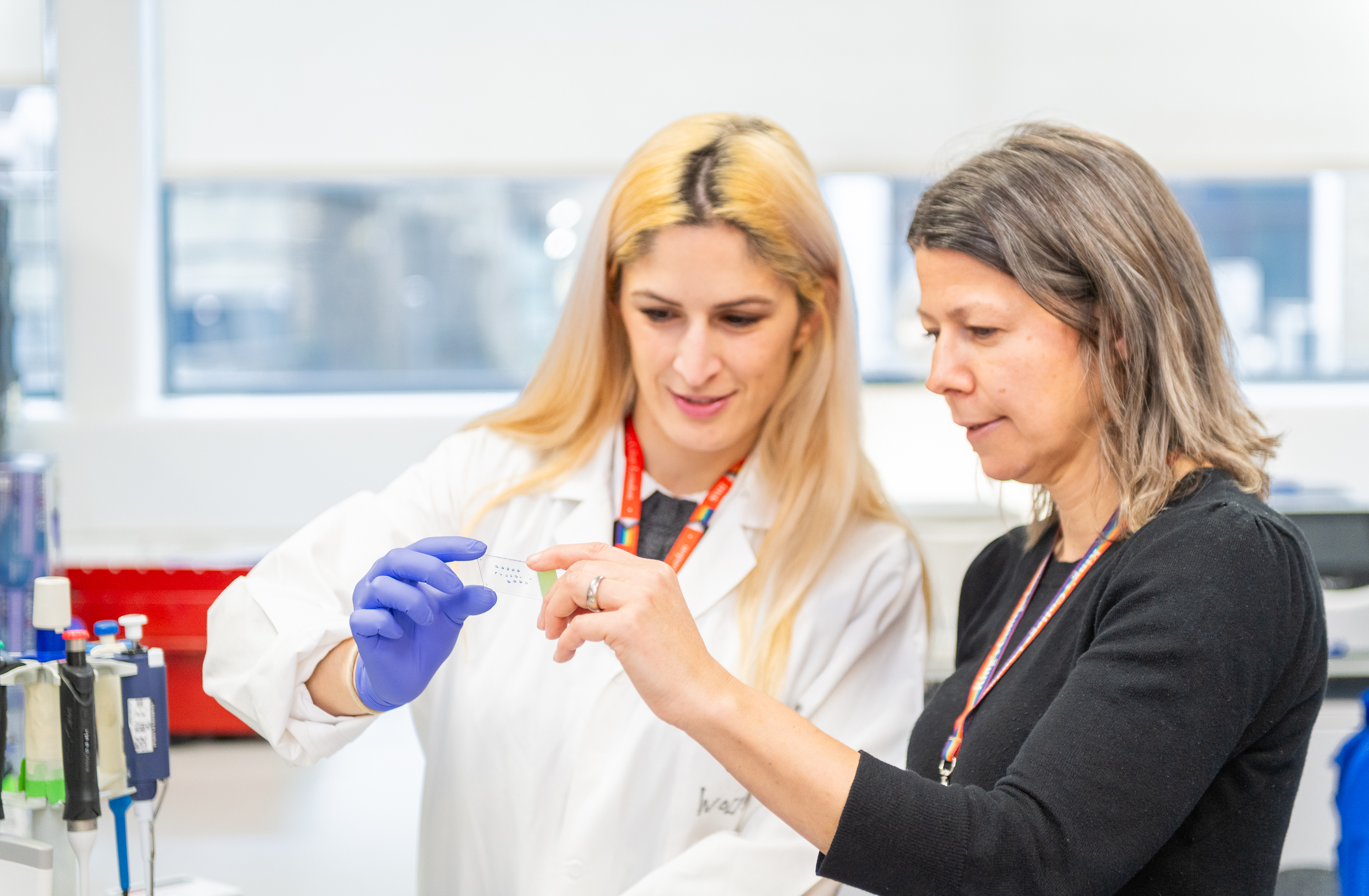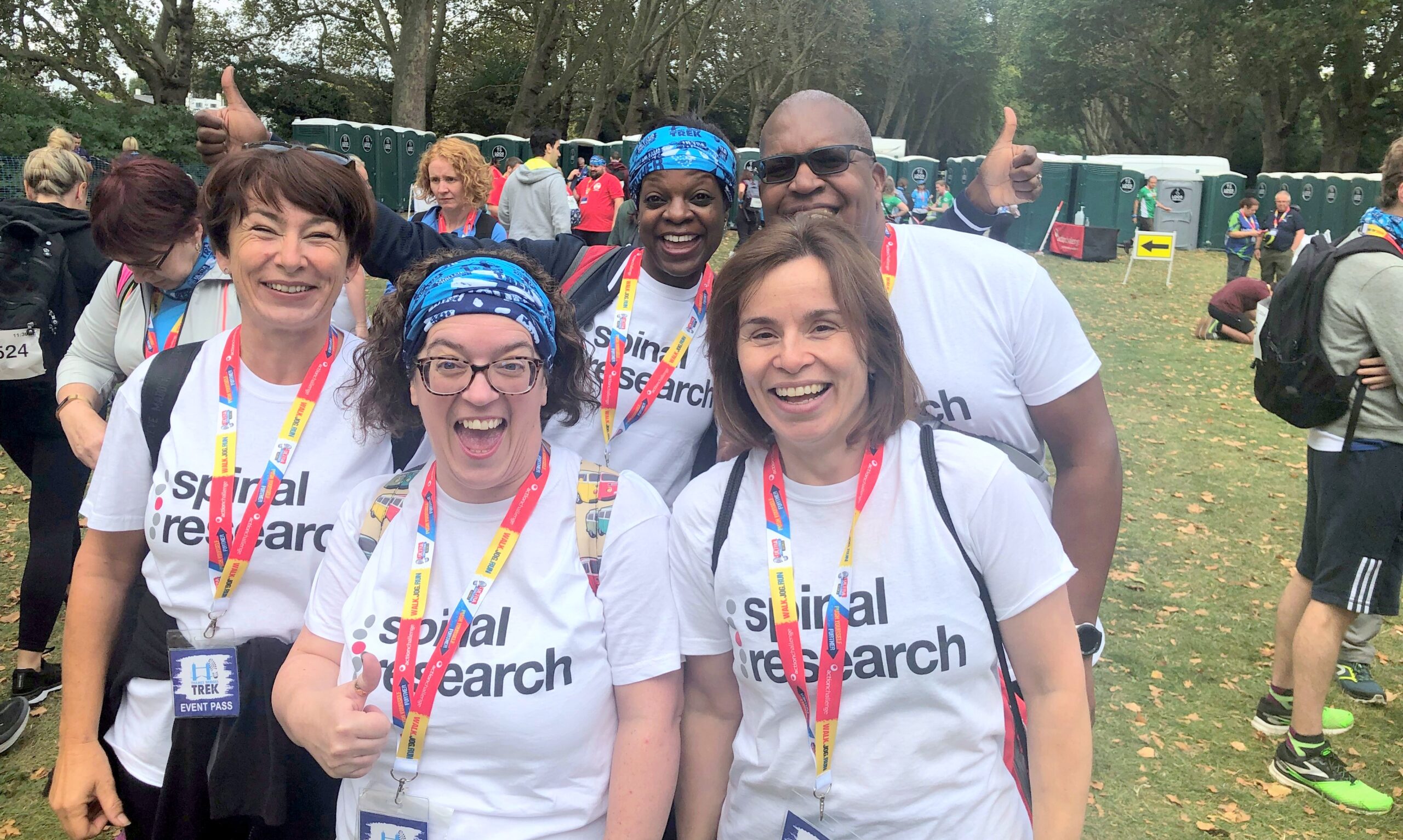Glossary
Understanding the biology, and the treatments needed to repair and restore the spinal cord can involve some complex language and concepts.
Although we try to keep our language simple for our supporters, there may be some terms you come across which you may not be familiar with.
Our short glossary of terms cover some of the more common terminology which will help you understand more about our work.
Axon: Imagine nerve cells as tiny messengers in our body. The axon is like their long arm that reaches out to pass along messages to other cells. These messages could be telling your hand to move away from something hot or your foot to take a step.
Neuron: Neurons are like the body’s messaging system. They’re the cells responsible for passing messages between your brain, spinal cord, and the rest of your body. They’re the reason you can move, feel, and think.
Myelin: Think of myelin as the protective coating around the long arm of the nerve cell (the axon). It’s like insulation on an electrical wire, helping messages travel faster through the nerve. When myelin is damaged, messages can slow down or even get mixed up.
Astrocyte: These are supportive cells in the brain and spinal cord. They’re like caretakers, making sure neurons have everything they need to work well. They also help clean up any messes or damage.
Oligodendrocyte: These cells are myelin producers. They wrap the axons (the long arms of nerve cells) in the brain and spinal cord with myelin, making sure messages zip along quickly.
Microglia: They’re the immune system’s special forces in the brain and spinal cord. Microglia are like tiny soldiers that clean up debris, fight off invaders, and help with repairs when there’s damage.
Neuroplasticity: This is your brain’s amazing ability to change and adapt. It’s like when you practice something over and over, your brain gets better at it. After a spinal cord injury, neuroplasticity helps the nervous system find new ways to work around the injury.
Axon Regeneration: After an injury, nerve cells try to heal by regrowing their long arms (axons) to reconnect with other cells. This process is like rebuilding a bridge that got damaged, allowing messages to flow again.
Glial Scar: When the nervous system gets injured, a tough scar-like barrier forms to protect the damaged area. Sometimes, though, this scar can block nerve regrowth, making it harder for messages to get through. Neuroinflammation: It’s like the body’s alarm system going off after an injury to help repair the damage. However, too much inflammation can sometimes cause more harm than good to the spinal-cord injury site.
Treatment Approaches
Neuromodulation: This treatment involves using electrical or chemical signals to modify nerve activity. In spinal cord injury, neuromodulation aims to restore function by stimulating or inhibiting nerve activity. Techniques include spinal cord stimulation, where electrodes are placed along the spinal cord to manage pain or enhance function, and brain-spine interfaces to really bring the intent of movement and sensory information between the brain and spinal cord.
Rehabilitation: Rehabilitation is a multifaceted approach that focuses on helping individuals with spinal cord injuries improve function, adapt to life changes, and achieve the highest possible level of independence. Rehabilitation is often combined with other treatment approaches to maximise the potential for restoring and regaining function.
Pharmacological Approaches: Pharmacological treatments for spinal cord injury involve the use of medications to manage symptoms, reduce inflammation, and potentially promote healing. Recent research focuses on neuroprotective drugs that aim to minimize damage to the spinal cord after injury and promote recovery.
Gene Therapy: Gene therapy aims to treat or prevent diseases by modifying or correcting genes within cells. In spinal cord injury research, gene therapy seeks to introduce specific genes into the spinal cord to promote nerve cell survival, enhance regeneration, or limit inflammation. This innovative approach holds promise for repairing damaged spinal cord tissue and improving functional outcomes by altering the genetic instructions within the injured area.
Intermittent Hypoxia: A treatment method used for spinal cord injury. It involves short periods of reduced oxygen levels during breathing exercises. This technique is believed to stimulate the body’s natural responses to improve breathing and muscle function below the level of the injury. By exposing the body to brief intervals of low oxygen, it encourages positive changes in the nervous system, potentially aiding in recovery and function for individuals with spinal cord injuries.


